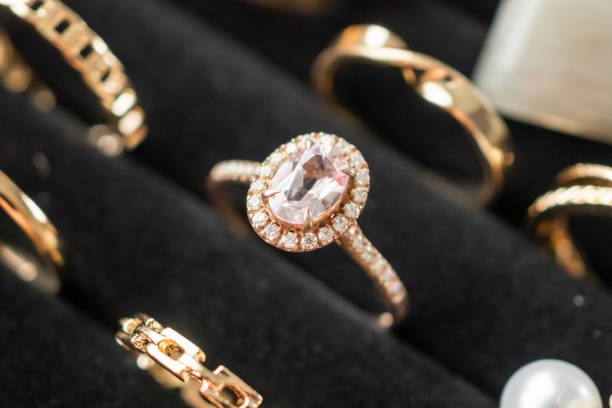Shopping for jewelry can be a delightful experience, especially when you’re dealing with wholesale jewelry suppliers. However, this joy can quickly turn into disappointment if you end up with counterfeit items. Knowing how to differentiate genuine pieces from fakes is essential. So, let’s explore how you can protect yourself and your business from fraudulent vendors.
1. Check for Authenticity Markings
Genuine jewelry often comes with specific authenticity markings that counterfeit pieces lack. Here are some things to look out for:
-
Hallmarks: Legitimate gold and silver jewelry often have hallmarks indicating the metal’s purity and origin.
-
Brand Stamps: Reputable brands put their logos or initials on their pieces, usually in an inconspicuous spot.
-
Serial Numbers: Exclusive and high-end jewelry might come with a unique serial number.
If your supplier can’t provide you with detailed information about these markings, it might be a red flag.
2. Inspect the Quality of Craftsmanship
Counterfeit jewelry often lacks the finesse and intricate details you find in genuine items. High-quality jewelry should exhibit:
-
Smooth Edges: No rough or uneven surfaces.
-
Secure Settings: Stones should be firmly set in their placeholders.
-
Consistency: Patterns and designs should be symmetrical and even.
Always scrutinize the craftsmanship before making a purchase, especially if you’re buying in bulk.
3. Evaluate the Source
A reputable source can significantly reduce the likelihood of getting counterfeit items. Conduct thorough research on your wholesale jewelry supplier. Check for:
-
Customer Reviews: What previous buyers are saying can give you insights into the supplier’s credibility.
-
Certifications: Legitimate suppliers often have certifications from recognized industry bodies.
-
Return Policies: Reliable suppliers usually offer a clear and fair return policy.
Feel free to ask for references or proof of authenticity before committing to a purchase.
4. Utilize Professional Appraisal Services
If you need clarification on the authenticity of your jewelry, a professional appraisal service can be invaluable. These experts can:
-
Verify Metal Purity: They can confirm whether the metal used is indeed what it claims to be.
-
Test Gemstones: They have the tools to distinguish real gemstones from imitations.
-
Provide Documentation: An official appraisal adds an extra layer of security and trust.
While it might come with a cost, the peace of mind and assurance it provides is well worth it.
5. Examine the Weight
High-quality jewelry often has a weight that corresponds to its material. For instance, gold and silver have distinctive weights that are hard to replicate with cheaper metals. Use a jewelry scale to measure the weight and compare it with standard measurements for that material.
6. Look for Consistency in Pricing
If a deal seems too good to be true, it probably is. Counterfeiters often lure buyers with prices that are significantly lower than the market rate. Always compare prices across various suppliers to understand the average cost. If one supplier is offering prices much lower than others, proceed with caution.
7. Do a Magnet Test
This simple test can help you identify fake metal jewelry. Precious metals like gold and silver are non-magnetic, so if the jewelry is attracted to a magnet, it might not be genuine.
8. Ask for Detailed Information
A reputable supplier should be able to provide detailed information about their jewelry, including:
-
Materials Used: A breakdown of all the materials used in the piece.
-
Production Process: How the item was crafted, including any special techniques.
-
Sourcing: Where the materials originated from.
If your supplier is hesitant or vague, you should reconsider your purchase.
9. Check Company Legitimacy
Before buying:
-
Verify the legitimacy of your supplier.
-
Look for a physical address, valid contact information, and a professional website.
-
Avoid suppliers who operate solely through social media without a proper business presence.
Many jewelry suppliers have comprehensive online platforms that offer transparency about their operations, making it easier for you to verify their credentials.
10. Understand Market Trends
Market knowledge is a powerful tool for spotting fakes. Stay updated on industry trends, such as popular designs and common counterfeiting practices. This will help you make informed decisions and recognize discrepancies.
11. Conduct Random Inspections
If you frequently buy in bulk, conducting random inspections on received batches can help identify any counterfeit items earlier. Having a quality control process in place assures that you’re maintaining the integrity of your inventory.
12. Read Agreements Thoroughly
Understand the terms and conditions outlined in your purchase agreement. Ensure that there are clauses covering the authenticity and return policy for counterfeit items. Having a legally binding document can protect you in case you receive fake jewelry.
Trust is a key factor when dealing with wholesale gold jewelry suppliers. Always look for a detailed and clear agreement that protects your rights as a buyer. This shows the supplier’s commitment to honesty and quality.
13. Use Technology
Several technological tools and apps can assist you in verifying the authenticity of your jewelry:
-
Metal Analyzers: Portable analyzers can quickly determine the composition of a metal.
-
Smartphone Apps: Some apps can identify jewelry by scanning it and providing information about its authenticity.
Incorporating these tools into your buying process can be a game-changer.
14. Build Relationships
Building a long-term relationship with your supplier can often result in better deals and trust. A good supplier will value your business and strive to provide genuine products to maintain a trustworthy relationship.
Trustworthy wholesale gold jewelry suppliers often go the extra mile to maintain their reputation. They understand that a satisfied customer is likely to return and refer others, which is critical in this competitive market.
Final Thoughts
Spotting counterfeit items requires diligence, knowledge, and a keen eye for detail. By following the steps outlined above, you’ll be well-equipped to differentiate between genuine and fake jewelry. Always rely on multiple methods of verification, and remember that if something feels off, it probably is. Protect your investments and ensure that you’re getting the best value for your money by being an informed and cautious buyer.





